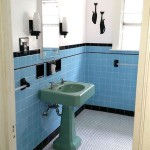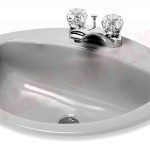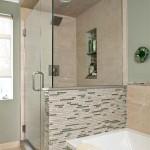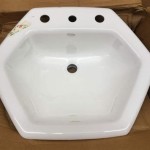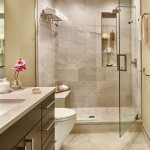How Much Will It Cost to Replace Bathroom Fans?
Replacing a bathroom fan is a common home maintenance task that can significantly improve air quality, reduce moisture buildup, and prevent mold growth. Understanding the costs associated with this project is crucial for homeowners planning their budgets and deciding whether to undertake the replacement themselves or hire a professional. The total cost of bathroom fan replacement is influenced by a variety of factors, including the type of fan, the complexity of the installation, and labor costs, particularly if professional assistance is required. This article will explore these factors in detail, providing a comprehensive overview of the financial considerations involved in replacing a bathroom fan.
The price of the replacement fan itself is a primary determinant of the overall cost. Bathroom fans are available in a range of models, from basic, inexpensive options to more advanced, feature-rich units. These features can include integrated lighting, humidity sensors, motion detectors, and even built-in Bluetooth speakers. Each addition contributes to a higher purchase price. Furthermore, the fan's airflow capacity, measured in cubic feet per minute (CFM), also impacts the cost. A fan with a higher CFM rating, designed for larger bathrooms, will generally be more expensive than a lower-CFM model suitable for smaller spaces.
Installation costs can vary widely depending on the complexity of the project. Replacing an existing fan with a similar model in the same location is generally the simplest and least expensive scenario. However, if the replacement requires modifications to the existing wiring, ductwork, or ceiling, the cost will increase. In some cases, it may be necessary to run new electrical wiring or install a new vent duct to the exterior of the house, significantly adding to the overall expenses.
Labor costs represent a significant portion of the total cost, particularly when hiring a professional electrician or contractor. Electricians typically charge an hourly rate for their services, and the time required to complete the replacement will depend on the complexity of the job. Factors such as the accessibility of the fan, the condition of the existing wiring, and the need for any modifications to the surrounding structure can all affect the total labor cost. Obtaining multiple quotes from qualified professionals is advisable to ensure competitive pricing and a clear understanding of the scope of work involved.
Fan Type and Features Impact Cost
The type of bathroom fan selected plays a significant role in determining the overall cost. Basic, builder-grade fans are generally the least expensive option, typically costing between $20 and $50. These fans are adequate for basic ventilation needs in smaller bathrooms. However, they often lack advanced features and may be noisier than more expensive models. These units focus on function over features and are straightforward swaps in existing, compatible set-ups.
Mid-range bathroom fans, priced between $50 and $150, offer a balance of performance, features, and noise reduction. These fans often incorporate features such as humidity sensors, which automatically activate the fan when humidity levels rise, and timers, which allow the fan to run for a set period after the bathroom is used. They may also feature quieter motors and improved airflow designs. Choosing a mid-range fan can significantly improve the user experience without breaking the bank.
High-end bathroom fans, costing $150 or more, are designed for larger bathrooms and feature advanced technologies. These fans may include integrated lighting, heating elements, and even Bluetooth speakers. They often boast very quiet operation and superior airflow capacity. Some high-end models also offer smart home integration, allowing users to control the fan remotely via a smartphone app. The cost reflects the enhanced features and performance capabilities.
Another factor influencing the fan's cost is the CFM rating. Bathrooms require a specific CFM based on the square footage of the room. A fan with insufficient CFM will not effectively remove moisture, leading to potential mold growth and damage. A general rule of thumb is to use a fan with at least 1 CFM per square foot of bathroom space. Fans with higher CFM ratings are more expensive but are necessary for larger bathrooms or bathrooms with high moisture levels.
Installation Complexity Drives Up Expenses
The complexity of the installation is a major driver of cost. Replacing an existing fan with a similar model in the same location is generally a straightforward task that can often be completed by a homeowner with basic electrical and mechanical skills. In this scenario, the cost is primarily limited to the price of the replacement fan.
However, if the installation requires modifications to the existing wiring or ductwork, the cost will increase significantly. For example, if the existing wiring is outdated or not up to code, it may need to be replaced with new wiring. Similarly, if the existing vent duct is damaged or improperly sized, it may need to be repaired or replaced. These tasks can be time-consuming and require specialized knowledge, often necessitating the expertise of a qualified electrician or contractor.
Installing a new vent duct to the exterior of the house is often the most complex and expensive aspect of bathroom fan replacement. This typically involves cutting a hole in the exterior wall or roof and running a duct from the fan to the opening. The duct must be properly insulated and sealed to prevent moisture from entering the house. This task requires specialized tools and expertise and is best left to professionals.
The location of the bathroom fan can also affect the installation cost. If the fan is located in a difficult-to-reach area, such as a high ceiling or a cramped attic, the installation will likely take longer and be more expensive. Similarly, if the bathroom is located on an upper floor, accessing the fan may require the use of ladders or scaffolding, further increasing the complexity and cost of the project.
Labor Costs: Professional vs. DIY
Labor costs represent a significant portion of the total cost of bathroom fan replacement, especially when hiring a professional electrician or contractor. Licensed electricians typically charge an hourly rate, which can vary depending on the electrician's experience, location, and the complexity of the job. In many areas, expect to pay an electrician between $75 and $150 per hour. The time required to complete the replacement will depend on several factors, including the accessibility of the fan, the condition of the existing wiring, and the need for any modifications to the surrounding structure.
For a simple fan replacement, where the existing wiring and ductwork are in good condition, an electrician may be able to complete the job in one to two hours. However, if the installation requires more extensive work, such as running new wiring or installing a new vent duct, the job could take several hours or even a full day to complete. Before hiring a professional, it is advisable to obtain multiple quotes and ask for a detailed breakdown of the estimated labor costs.
Undertaking the replacement as a DIY project can save on labor costs, but only if the homeowner possesses the necessary skills and experience. Replacing a bathroom fan involves working with electrical wiring, which can be dangerous if not handled properly. It is critical to turn off the power to the circuit before beginning any work and to follow all safety precautions. If unsure about any aspect of the installation, consulting with a qualified electrician or contractor is recommended.
Even if the homeowner is comfortable with the electrical aspects of the project, other factors may make DIY installation challenging. For example, running new vent ducting requires cutting holes in the exterior of the house, which can be difficult and potentially damaging if not done correctly. Additionally, DIY installations may not be up to code, which can cause problems during a home inspection or when selling the property. Weighing the potential cost savings against the risks and challenges of DIY installation is essential.
In summary, the cost to replace a bathroom fan can vary widely depending on several factors. A basic replacement of a builder-grade fan might cost as little as $50 to $100 if done DIY. A more complex project involving a high-end fan with advanced features and professional installation could easily exceed $500 or even $1000. By carefully considering the type of fan, the complexity of the installation, and the labor costs involved, homeowners can make informed decisions and budget appropriately for this important home maintenance task.

Average Cost To Install A Bathroom Fan Forbes Home

How Much Does It Cost To Install Bathroom Ventilation And Fans Badeloft

2024 Cost To Install Bathroom Fan Angi

Cost To Install A Bathroom Fan Apartment Geeks

Bathroom Extractor Fan Costs Calculator Quotes For 2024

How Much Does It Cost To Install Bathroom Fan

How Much Does It Cost To Install Bathroom Ventilation And Fans Badeloft

Bathroom Extractor Fan Installation Cost Guide How Much Is It

Bathroom Extractor Fan Installation Cost Guide How Much Is It

How Much Does It Cost To Install A Bathroom Fan 2024 Bob Vila

